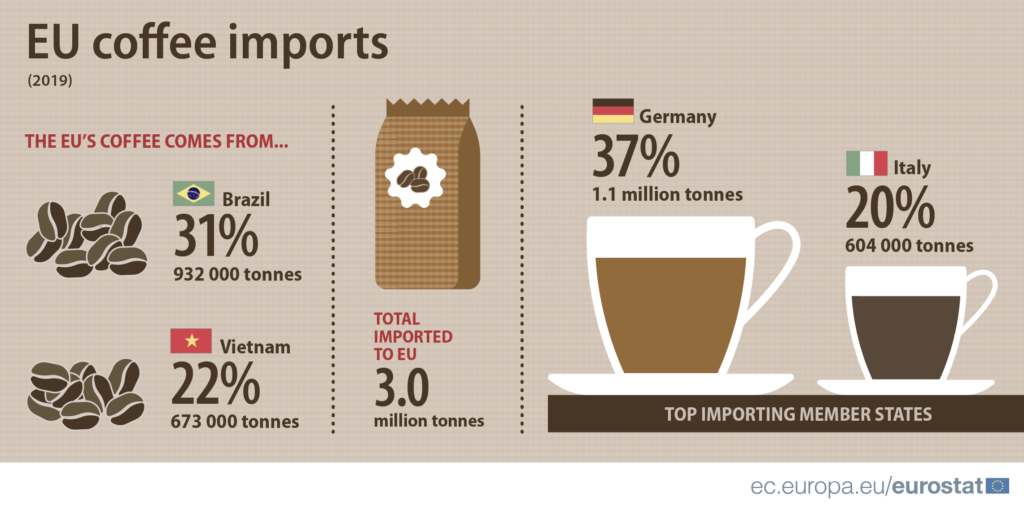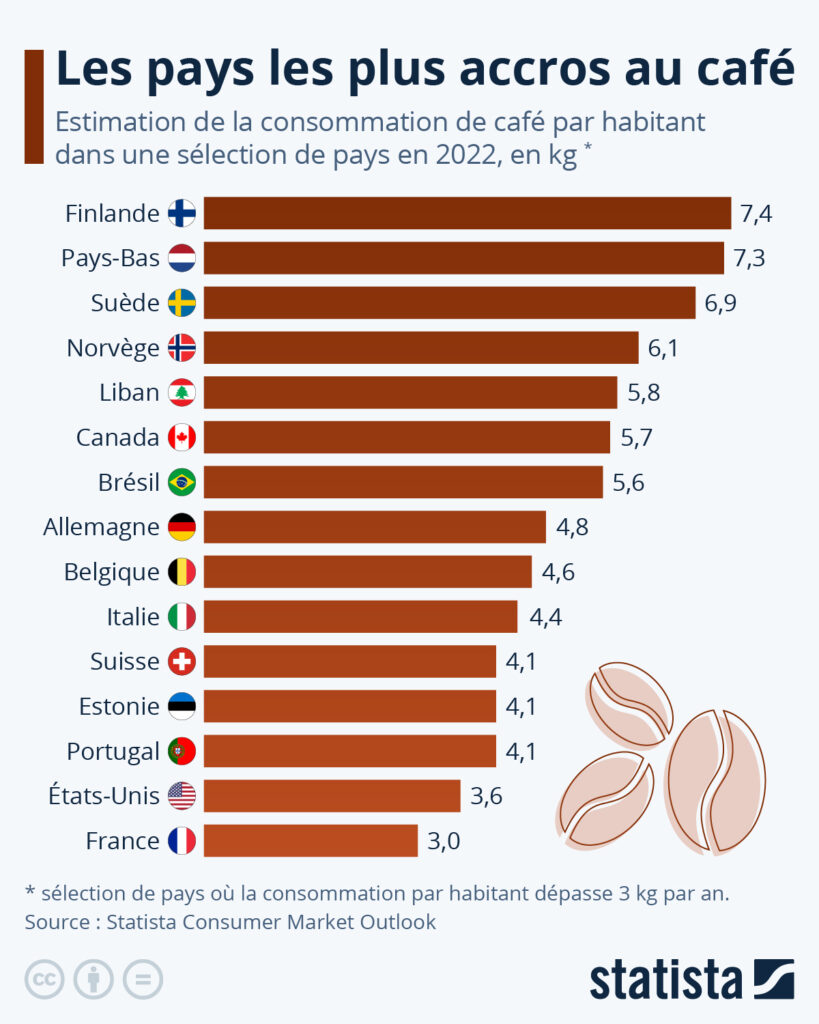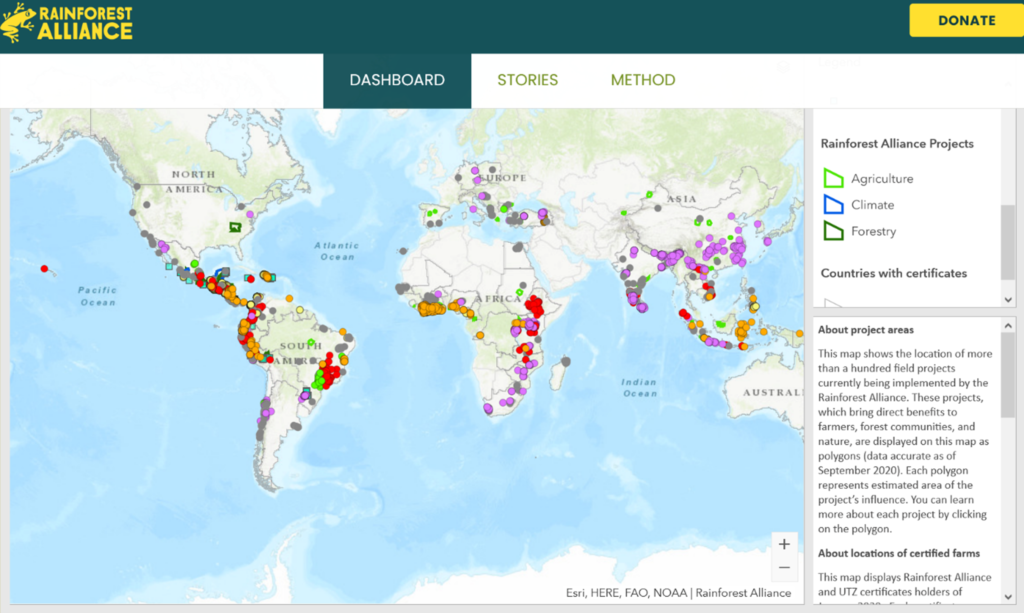
Coffee consumption by country in a few figures
Worldwide coffee consumption statistics
Along with cocoa, coffee is one of the most widely traded commodities in the world, and the most widely consumed beverage after water. Today, almost 75% of the coffee produced in exporting countries is destined for the world market. Some countries drink more coffee than others. Here are some statistics on coffee consumption and exports around the world.
Coffee-producing and exporting countries
Most of the world’s coffee is produced in tropical and subtropical zones, and therefore for the most part in developing or underdeveloped countries. The export of green coffee represents an extremely important financial windfall for these countries, whose cultivation and production are a huge source of employment.
The coffee economy is of considerable importance, providing a livelihood for some 25 million people worldwide, mainly small-scale producers. Processing and distribution, meanwhile, are estimated to generate some 100 million jobs!
According to a study by the European statistics institute Eurostat, in 2019, most of the coffee imported into Europe came from two countries. Brazil remains the main coffee exporter, with over 900,000 tonnes imported (representing 31% of total coffee imports into Europe), although its share is declining in the face of competition from other countries such as Vietnam, which exported around 673,000 tonnes of green coffee to Europe (or 22%).
To back up other coffee consumption statistics, other countries also follow suit, such as Honduras with 221,000 tonnes (7%), Colombia with 166,000 tonnes (6%), Uganda with 145,000 tonnes (5%), India with 137,000 tonnes (5%), Peru with 113,000 tonnes (4%), Ethiopia and Switzerland with 80,000 tonnes each (3%) and Indonesia with 77,000 tonnes (3%).
Coffee consumption by country in figures
While we all know that Italians have a strong taste for the traditional espresso, Italy is not the world’s leading coffee-consuming country. Far from it ! The people of Finland beat the Italians and the French to the punch, with 7.4 kg of coffee consumed per capita per year, according to a study on average coffee consumption carried out by the Statista Institute in 2022.
Some statistics on coffee consumption by country: the Italians rank tenth, while the French are only fifteenth on the podium, just behind the USA. Mexico, for its part, is a major producer of coffee, with 270,000 tonnes produced in 2020, but consumes just 0.5 kilos each year !
Here are the results of the ranking in kilos, per capita, for countries where consumption exceeds 3 kilos per year :
Coffee, the flagship of fair trade
Chosen as a symbol of fair trade, the cultivation of certified fair trade coffee helps to improve the living conditions of hundreds of thousands of people, by setting up networks of small-scale growers to prevent them from plunging into poverty.
Buyers and importers of fair-trade coffee undertake to purchase coffee beans at a fair price, even if the purchase price and world market prices fall below a defined threshold. This better remuneration and stabilization of prices paid to cooperatives, combined with a purchase guarantee for several years, offers financial security to small producers.
Interactive graphic from the Rainforest Alliance, which you can find by clicking on the following link
In addition to enabling producers to earn up to double the price paid on traditional local markets, end consumers of fair-trade coffee now guarantee the payment of development premiums to finance food, healthcare and education programs around the world.
In this way, fair trade coffee aims to establish fairer trade rules for everyone, and reduce the impact of coffee production on the environment.


